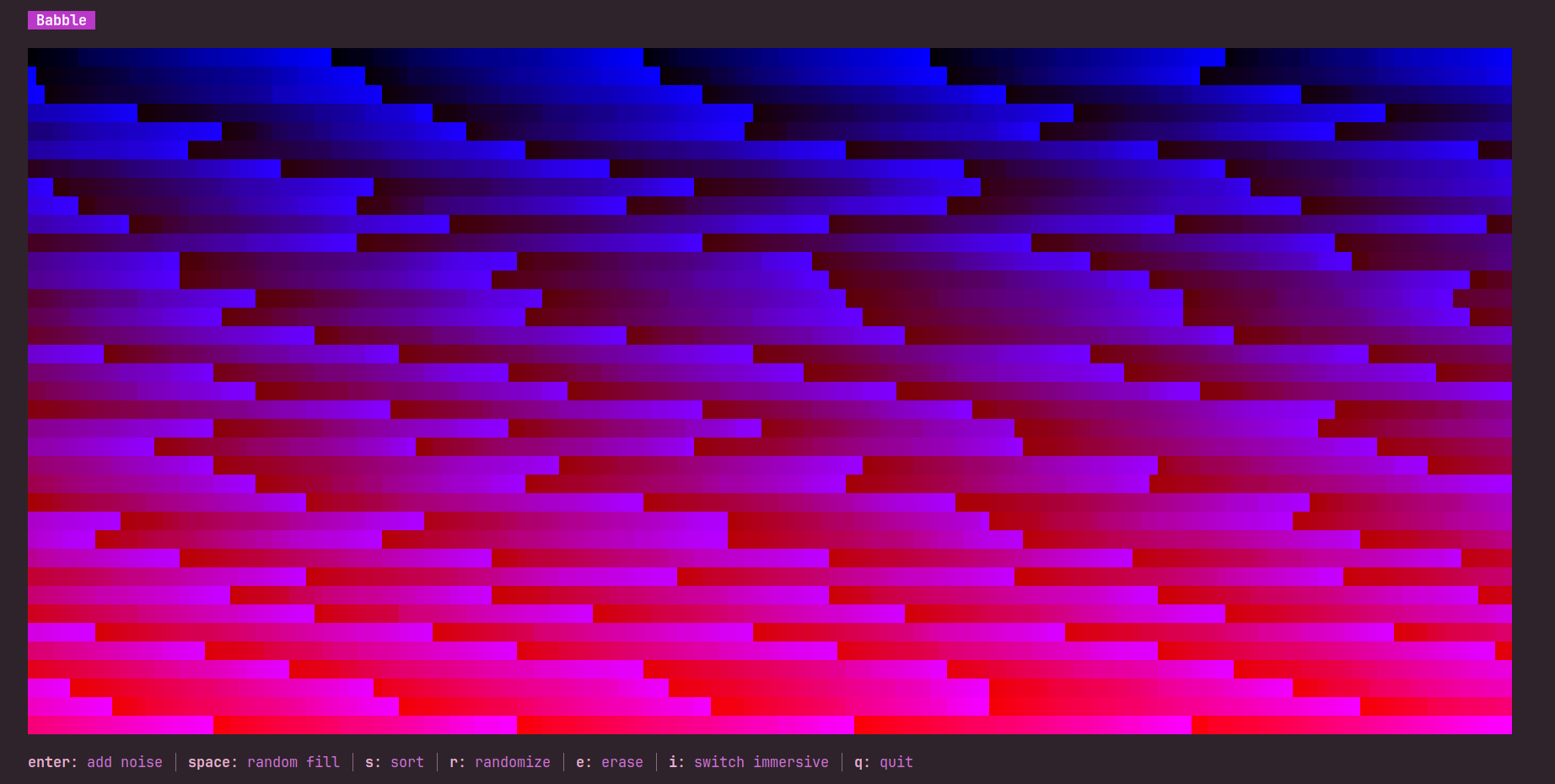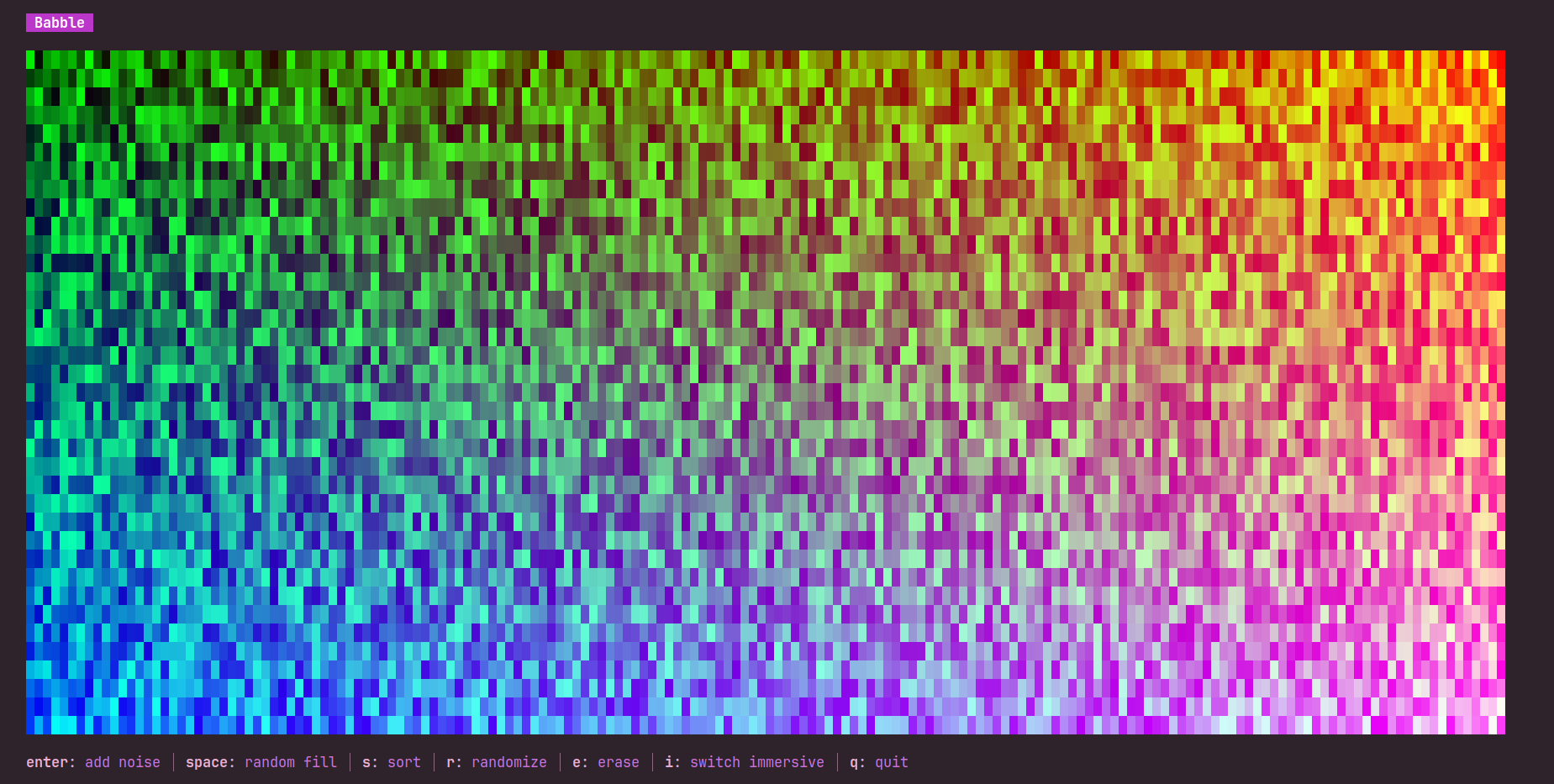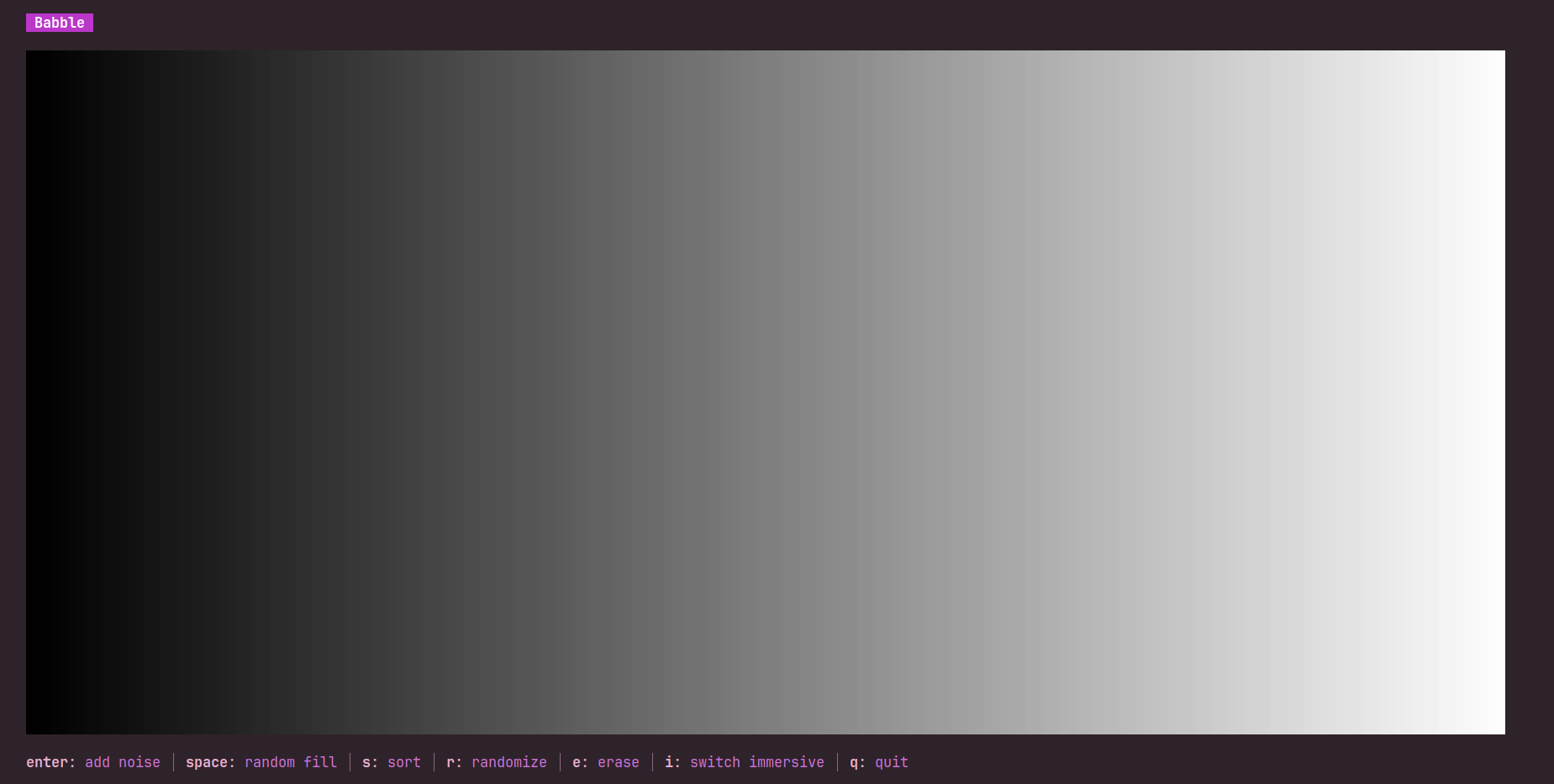Babble is a pretty visual noise generator TUI application.
To be fair, none. It's more like a fun project and a proof of concept of combining coquille and outspin.
After starting Babble, you should see two text elements: at the top is the header of the application, and at the bottom the status bar with the keys and what they do when pressed.
A huge empty space is left in the center: this is where the window that you will fill up sits.
- Press
Spaceto randomly fill the pixels until the window is crowded. Enteris similar toSpacebut is like a "step": it only randomly fills a few pixels and the process is done once.- Pressing
rwill shuffle the pixels around. It does not fill any new one. - Pressing
sdoes the opposite ofr: it sorts the pixels in a certain way. - Press
eto clean the window. ienters the immersive mode, which simply hides the header and the status bar. Pressing it again exits that mode.- Press
fif you need to force refreshing the interface, for example if your terminal size has changed. - Finally, you can press
qto quit Babble. Alternatively, you can also useesc.
Important
Space: You can interrupt the process by pressing Ctrl + C. The pixels already filled keep their state.
Note
The sorting algorithm will be configurable in the future.
Once you have installed Babble locally, simply type babble in the terminal and press Enter.
-
First, clone the repository and move to the directory:
git clone git@github.com:qexat/babble cd babble -
(Optional, but highly recommended) Create a virtual environment and activate it:
virtualenv .venv -ppython311 source .venv/bin/activate[!WARNING] If your shell is not
bash, the activation script might have a slightly different name. -
Install Babble:
# the dot means "the project of the current directory" pip install .
-
You are set up! You can now run Babble:
babble
Once you are in Babble, press q or esc to quit the program.
All the commands above at once:
git clone git@github.com:qexat/babble; cd babble
virtualenv .venv -ppython311; source .venv/bin/activate
pip install .
babbleSome of Babble's behavior can be configured.
--randomize-at-launch: (default:False) pretends that you pressedSpaceat startup.--immersive: (default:False) activates the immersive mode by default.--pixels-per-step: (default:1000) changes the number of pixels generated at each step (e.g. when pressingEnter)--theme: (defaultbabble) sets the context theme to be one of the built-in ones.
Here is a list of the built-in themes.
To set a theme, specify the --theme argument in the command line, for example:
babble --theme plasmaA nice 2D gradient from red to blue through magenta.
Every pixel is of completely random color.
babble, but in a different orientation and with some green noise overlay.
A simple left-to-right black-to-white gradient.
I hope you like it ❤️
Encountered a problem? Want to request a feature? Open an issue!
A question? Find me on X/Twitter!



